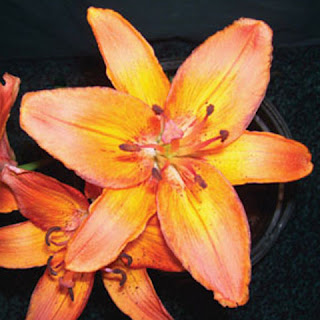Daylilies have been cultivated for over four thousand years beginning in China where they were popular for food and medicine. They were imported into Europe around the 16th century mostly for their ornamental value. Nowadays, we hardly even think of them as food. Each flower blooms for a day and then it's gone. What a shame to let them go to waste when they could be eaten.
Daylily blossoms can be enjoyed raw, steamed, dried, stir-fried and deep-fried in tempura batter. Serve them with noodles, rice and with other mixed vegetables.
Not only are the flowers edible, but all parts of the plant are succulent as well. Daylily leaves and tubers can be chopped and stir-fried along with mushrooms, squash, onions and many other vegetables. Daylilies aren’t only for summer eating when the flowers are produced. The tuberous roots can be harvested any time of year. Collect them when you dig the overgrown clumps to divide them.
With the rising cost of food and shortages of some items, thanks to the ineptitude of our politicians, you might be looking for something new and affordable to add to your table. Does your unreasonable HOA not allow you to grow a vegetable garden in your front yard? Grow edible flowers. If you forage in the footsteps of Euell Gibbons, add daylilies to your basket. You may find the common ditch lily (Hemerocallis fulva) growing wild in fields and, um, ditches. (Make sure you rinse them well.)
.jpg) |
| Hemerocallis fulva growing roadside |
A few words of caution are in order. As with any food, some folks might have sensitivities or allergies. Nibble at first with caution. In addition, know that we’re discussing daylilies (Hemerocallis), not true lilies (Lilium species). You shouldn’t get them confused.
.jpg) |
| Hemerocallis |
 |
| Lilium |
The folks at Prepsteaders.com produced a fine video a few years ago titled How To Eat Daylilies. Christa Swartz did a very good presentation. I recommend it. So, enjoy the video, then order some daylilies.
Return to Daylilies at GoGardenNow.com.






No comments:
Post a Comment